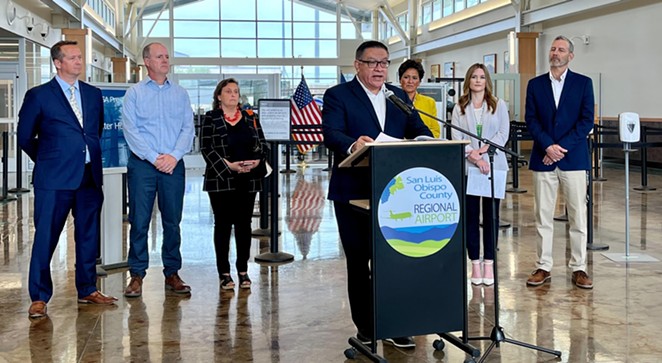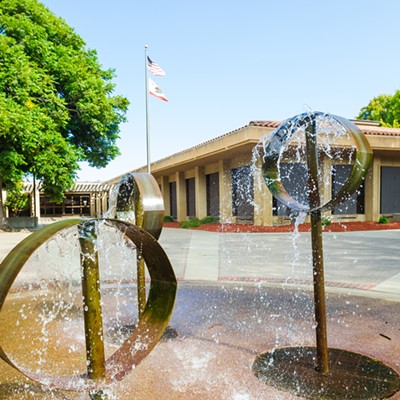A new law will enable local airports to apply for federal grants to help replace firefighting foam laden with “forever chemicals.”
On May 16, President Biden signed the Clean Airport Agenda into law. Led by U.S. Rep. Salud Carbajal (D-Santa Barbara), Rep. Mike Lawler (R-New York), and Rep. Derrick Van Orden (R-Wisconsin), the slate of bipartisan bills aims to curtail the threat of per- and polyfluoroalkyl substances (PFAS) near airports.
Undetectable by sight, smell, or taste, PFAS is found in products like shampoo and dental floss, in grease-resistant food packaging, and nonstick cookware. U.S. Environmental Protection Agency (EPA) studies found that certain levels of PFAS exposure led to higher risk of cancer, higher blood pressure in pregnant women, and other disorders.
In 2019, the State Water Resources Control Board ordered 30 airports—including the Santa Maria Regional Airport, the Santa Barbara Municipal Airport, and the San Luis Obispo County Regional Airport—to investigate their groundwater and soil for the chemical. State regulators pinpointed pollution to a PFAS-rich foam called aqueous film forming foam (AFFF), which has been discharged into the environment since the mid-1970s through annual firefighter training sessions.
The recently signed bills include the Pollution-Free Aviation Sites Act, which establishes a $350 million grant program for the next five years. Airports around the country can apply for this money to support their replacement of AFFF.
“But it also requires the Federal Aviation Administration [FAA] and the Department of Transportation to provide progress reports every six months to see how we are doing in the transition of PFAS-free firefighting foams,” Carbajal told the Sun.
Central Coast airports are currently working on transitioning to using fluorine-free foam (F3) in compliance with FAA guidelines. F3 neither contains PFAS nor does it persist in the environment and pose numerous health risks, but the newly approved foam is available in short supply.
“You still don’t have an abundance of it, and there’s a lot of demand for it at the same time,” said Martin Pehl, the general manager of the Santa Maria Public Airport District. “I mean, you think about it, AFFF is pretty much worthless now. Everyone’s going to be getting rid of it in the state, and everyone’s going to be asking for F3.”
He added that it would take roughly six months for the Santa Maria airport to switch to F3.
The Santa Barbara airport is halfway through its F3 transition.
“We just placed an order, and so it’s just a period of time between when you order the product and when you receive it. That is a lengthy time,” said Santa Barbara Airport Director Chris Hastert.
The Santa Barbara airport still uses AFFF in its aircraft rescue firefighting trucks, but it’s ordered 1,420 gallons of F3 for those vehicles—more than 200 gallons for each of the three trucks, and the remaining 800 gallons will replace the foam when it’s used. Hastert said the airport only uses firefighting foam during major incidents, which have been infrequent. Further, the airport already switched to F3 in the hangars because it was an easier replacement process.
Currently, the Santa Barbara airport is narrowing down where it might have PFAS contamination and is on phase 4 of testing in accordance with Central Coast Regional Water Quality Control Board guidelines. The Santa Barbara airport plans to complete phase 4 later this year, determine a treatment plan, and start applying for a portion of the $350 million grant program.
According to Carbajal, the SLO County airport and its surrounding residents played vital roles in creating urgency for such a funding program. He noted how a SLO County-contracted consultant company’s sampling of 57 private wells near the airport found 52 of them loaded with PFAS-contaminated water.
“Keep in mind that these foams were required by the federal government, and airports have been doing this throughout the country. This now acknowledges that these are toxic foams, and we need to transition away from them,” he said.














